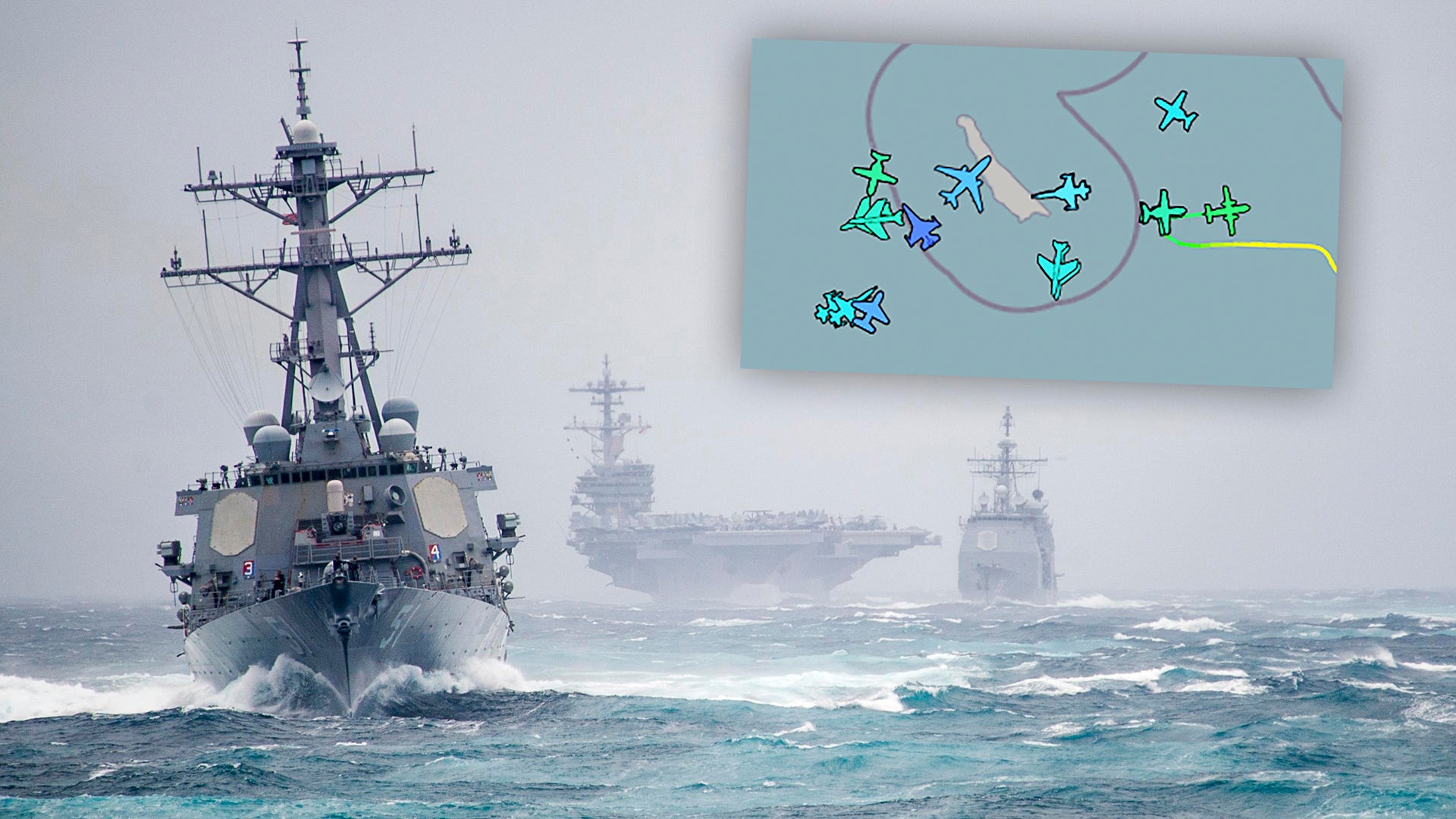As carriers prepare for deployment, months of smaller exercises culminate in bringing all the pieces together in a huge exercise, which includes combining the Carrier Strike Group’s (CSG) ships, submarines, air wing, and more into a single integrated fighting unit. The peak of this process is the Composite Unit Training Exercise, or COMPTUEX.
This advanced evolution stress tests the CSG’s defenses. It often includes a small air armada of U.S. military and contractor-owned tactical aircraft that act as enemy fighters, bombers, and cruise missiles in a coordinated fashion, employing similar ‘red air’ tactics as to what the CSG may face from a foreign adversary when on deployment. Using open-source flight tracking websites, in this case, ADSBExchange.com, a bit of what goes on during these events can be seen, as was the case on December 18th, 2020, when the supercarrier USS Theodore Roosevelt and her escorts were training off Mexico’s Baja Peninsula in preparation for a new deployment.

Involved in the exercise and visible on flight tracking sites were the following:
- 4X Mk 58 Hawker Hunters owned by Airborne Tactical Advantage Company (ATAC)
- 1X F-21 Kfir owned by ATAC
- 4X F-5ATs owned by Tactical Air Support, Inc. (TacAir)
- 3X Learjet 35s owned by Phoenix Air
- 2X U.S. Air Force KC-10s, one orbiting down south supporting the carrier’s air wing and another around San Clemente Island, likely supporting Navy aggressors.
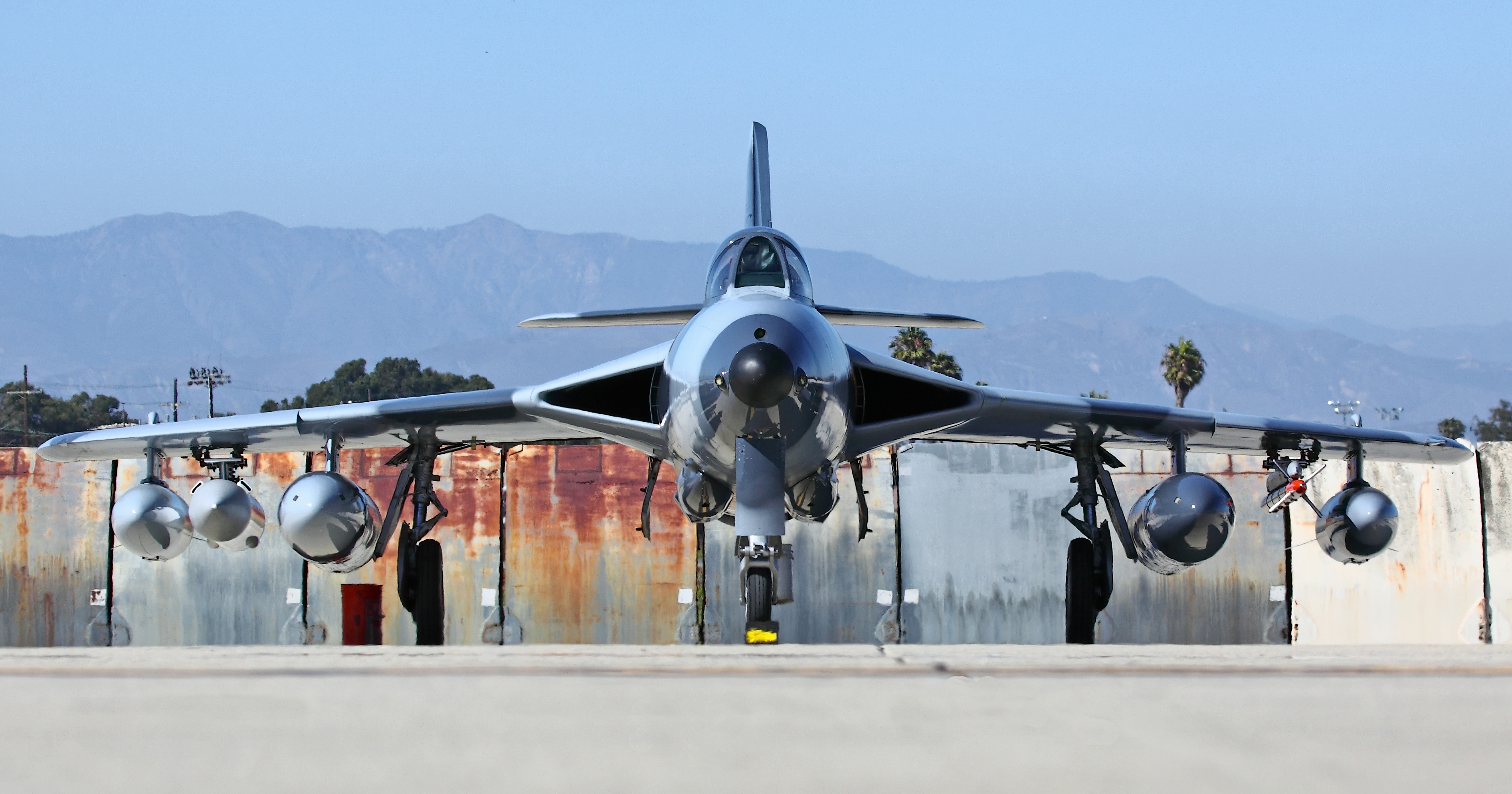
Keep in mind that this is the force we are allowed to see. The ‘Red Air’ component of these exercises also usually includes a detachment of fighters from one of the Navy’s aggressor squadrons, such as Hornets from Fighter Composite Squadron 12 (VFC-12) or Strike Fighter Squadron 204 (VFA-204). Other assets are also brought in, including those from the Air Force. In recent west coast COMPTUEXs, the Air Force’s secretive pocket force of stealthy F-117 Nighthawks have been players, as well, complicating things for Navy defenders with a hard to track aircraft the likes of which they have never seen before—certainly a valuable wildcard element.
We also don’t see the ships themselves, or the U.S. Navy fighters and airborne early warning aircraft that are airborne to protect the fleet from the mock attack. Also, it’s important to note that a minimum of three Aegis-equipped warships, usually a Ticonderoga class cruiser and two Arleigh Burke class destroyers, are tasked with defending the carrier and themselves and are the most advanced air defense assets on planet earth. They are all down there, too, swirling around, deep in what has become something of a notorious training area off the coast of Baja.
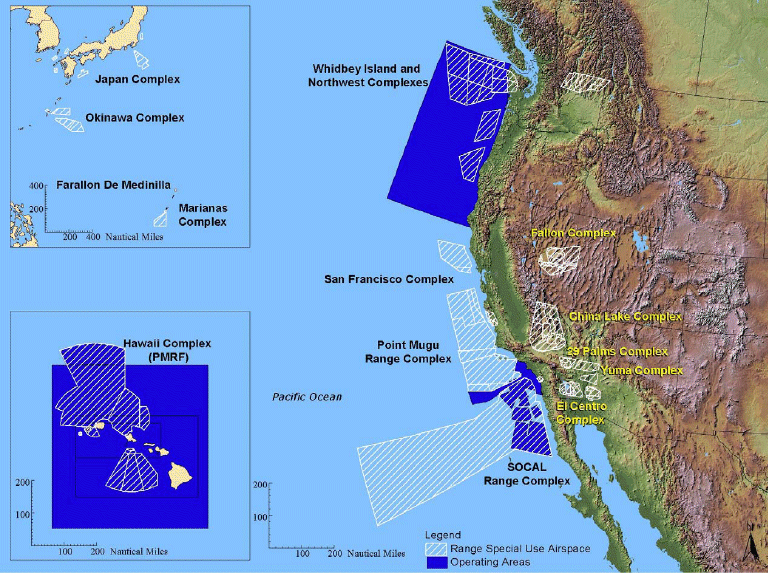
So, you have to use your imagination a bit as to what is going on in the video and who all is out there, but the contractors give us a good idea of what the red air game plan was on this one sortie. Also, keep in mind that these events change radically from day-to-day and from COMPTUEX to COMPTUEX. The idea is to present as many different complex threat scenarios as possible, that are as relevant as possible, to the CSG.
In the late afternoon on December 18th, all these red air assets were in holding over and around San Clemente Island, when, on cue, many of them started pushing south. It was a wall of tactical aircraft, a dozen jets being visible on the tracker, and surely more being present in reality. A wall of four Hunters pressed south at high-subsonic speed at around 10,000 feet, while a single transonic F-21 Kfir led out in front at 40,000 feet. Often times the Kfirs are used to simulate the attack profiles of high-speed anti-ship cruise missiles, using their supersonic capabilities to dive onto the ships below from high altitude, and then skimming low over the water for their simulated terminal attack. You can read more about this attack profile in this past piece I wrote about ATAC’s operations a decade ago.
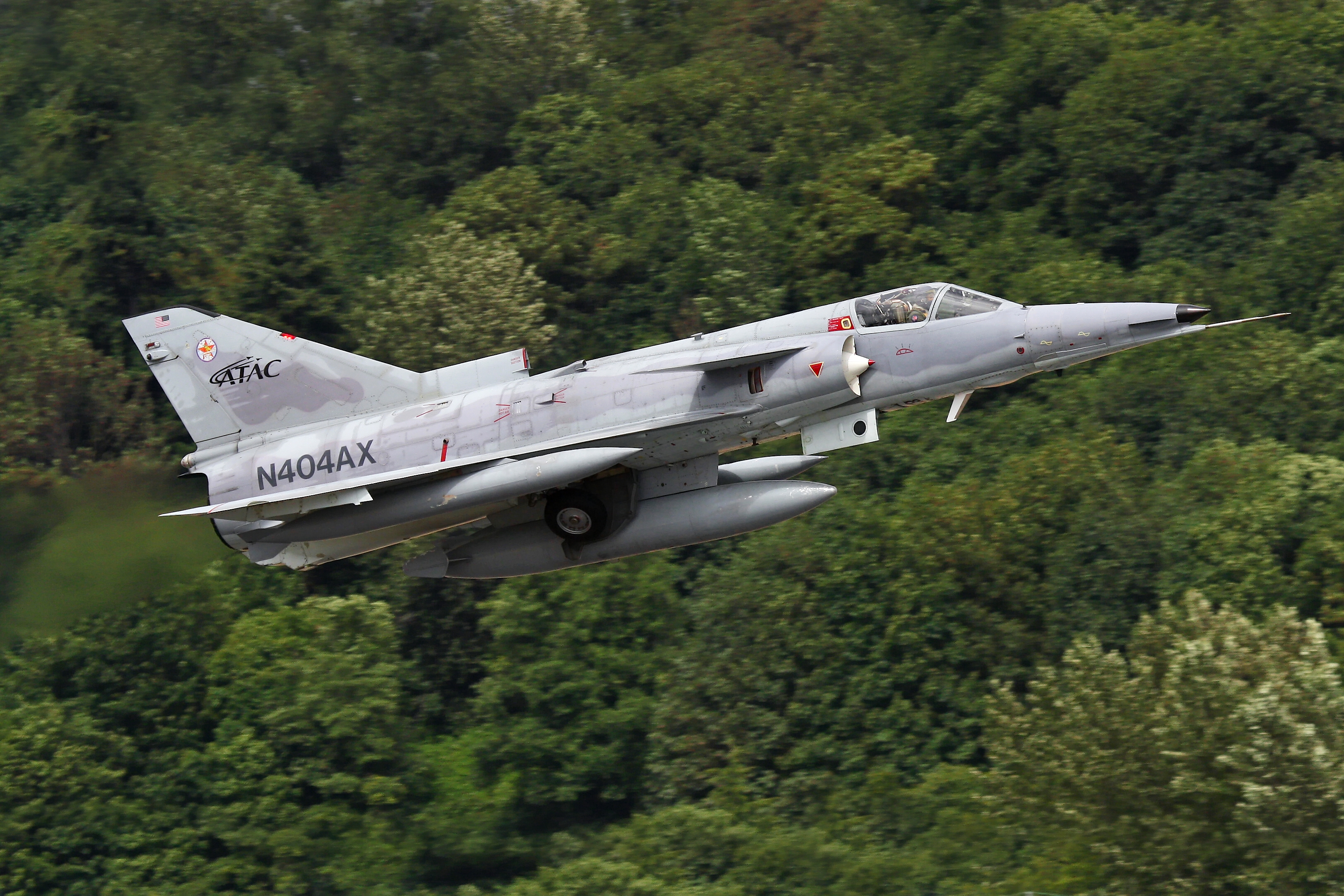
These jets, like all the contractor aircraft involved in this training mission, usually pack electronic countermeasures pods and can also be equipped with cruise missile radar seeker emulator pods to give similar cues to sailors as they would see in a real-life anti-ship missile attack.
The Kfir disappeared on the flight tracking website as it headed south, likely because it dove down to a very low altitude. Meanwhile, the Hunters were still making their run-in at the CSG, while two sections (two groups of two) of F-5ATs began their own runs towards the CSG, offset behind and to either side of the Hunters. This is where our video picks up. It is sped-up roughly 10X.
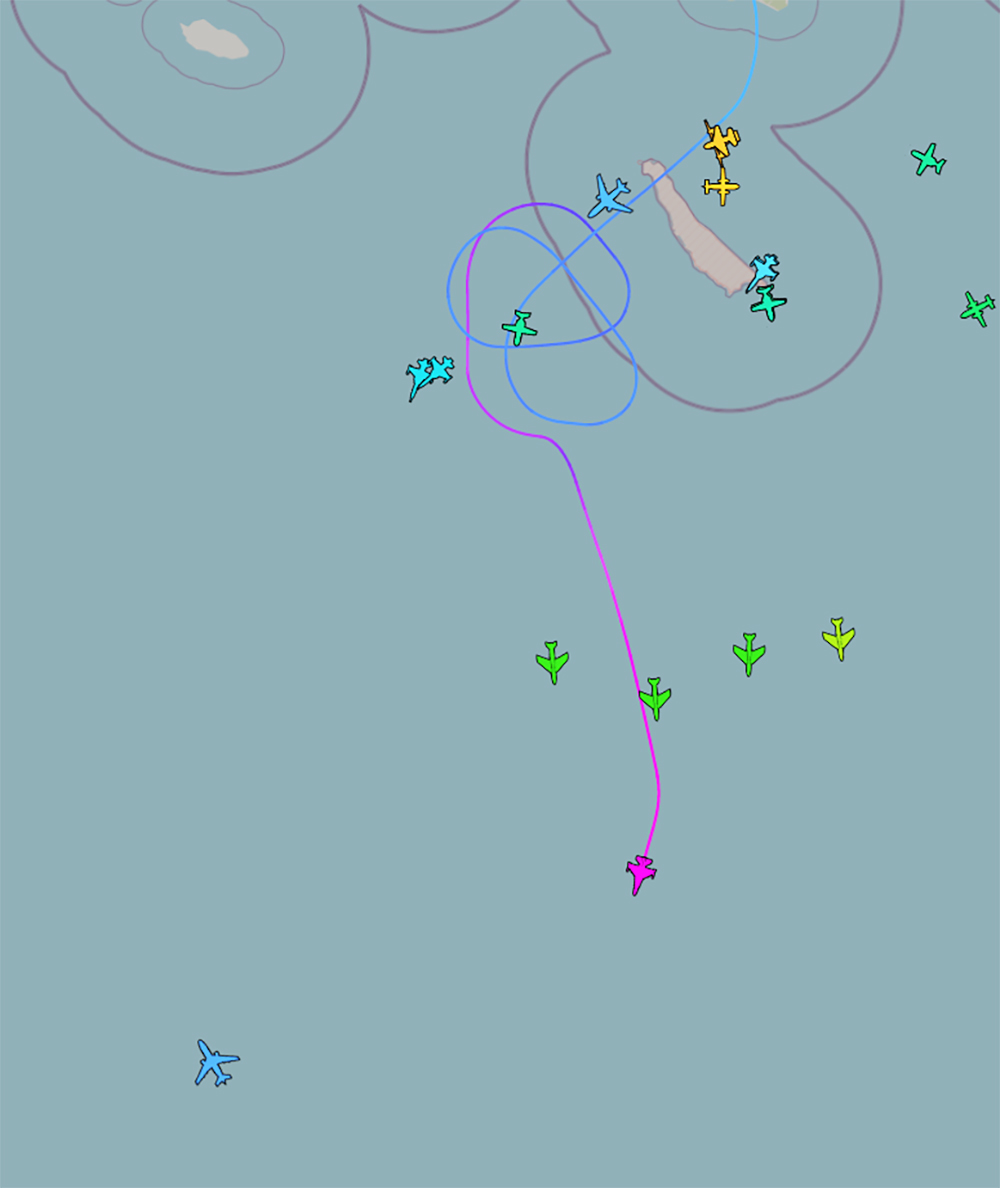

As you can see, the Hunters reach a certain area and then abruptly turn west and east, and extend out in those directions before heading back north. Meanwhile, the F-5ATs do a similar beaming maneuver, but they turn south and commit to a second push at the CSG before also breaking off to the west and returning north for eventual recovery. The Hunters would head back to their operating location at Naval Air Station Point Mugu and the F-5ATs head back to Naval Air Station North Island. Also during this time, the KC-10 supporting the CSG’s air wing looks as if it evades the fighter onslaught, breaking off its tight racetrack pattern and heading south deeper into the CSG’s protective umbrella.
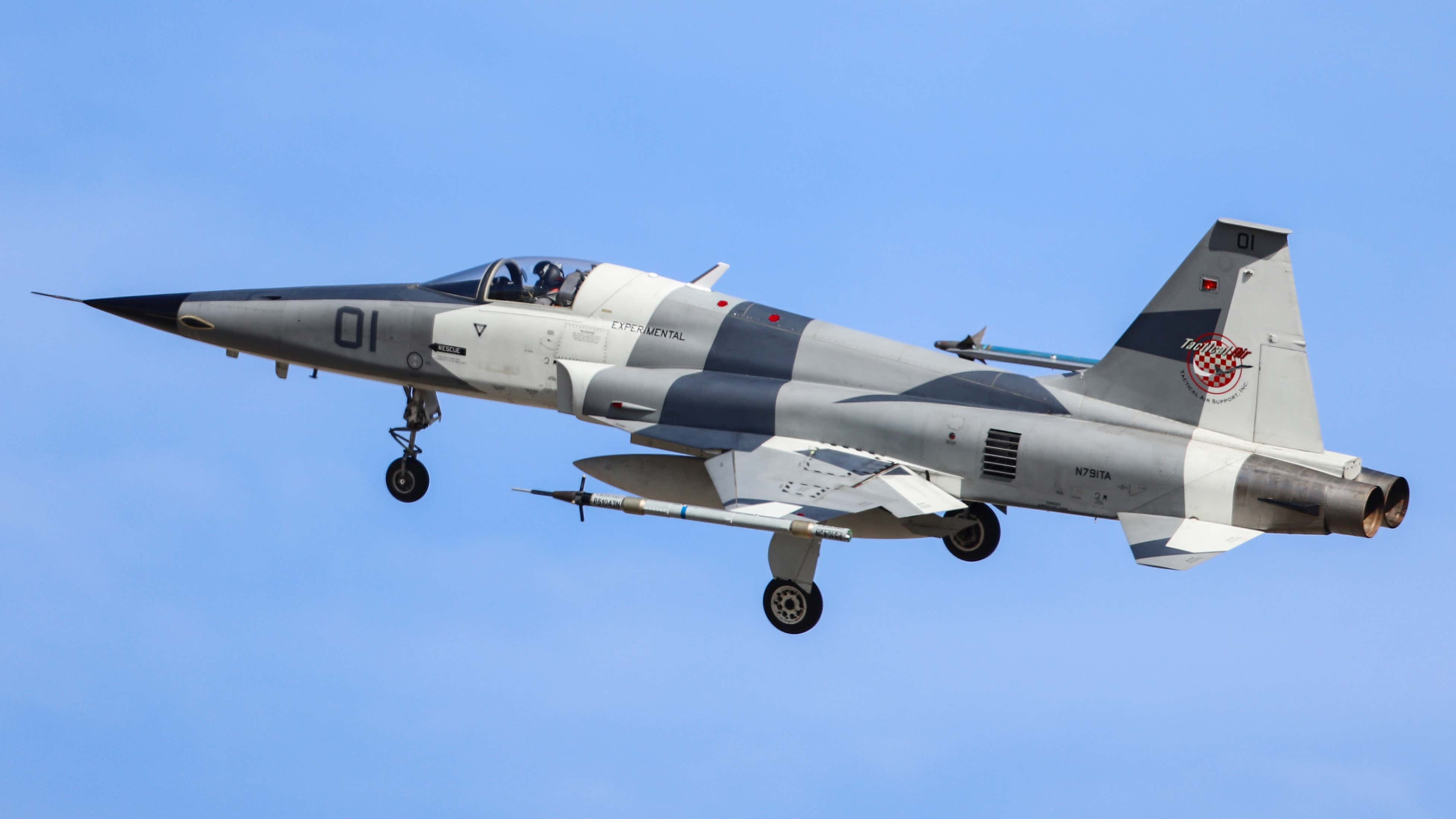
As the F-5ATs and Hunters head back north, a third group of ‘bad guys’ turns to the south to make its run on the CSG. This time it is a trio of electronic warfare pod-toting Learjet 35s owned by Phoenix Air. These aircraft fly out of NAS North Island and provide daily target emulation, among other services, for fleet surface combatant training. They can represent a number of threats, from bombers to anti-ship cruise missiles. In this case, they make a similar run at the CSG as the Hunters made. Traveling south in a wide line-abreast arrangement at about 10,000 feet and about 350 knots. Then, like the Hunters before them, they all turn abeam at the same time, all to the east though, where they linger for a bit before returning north to North Island.
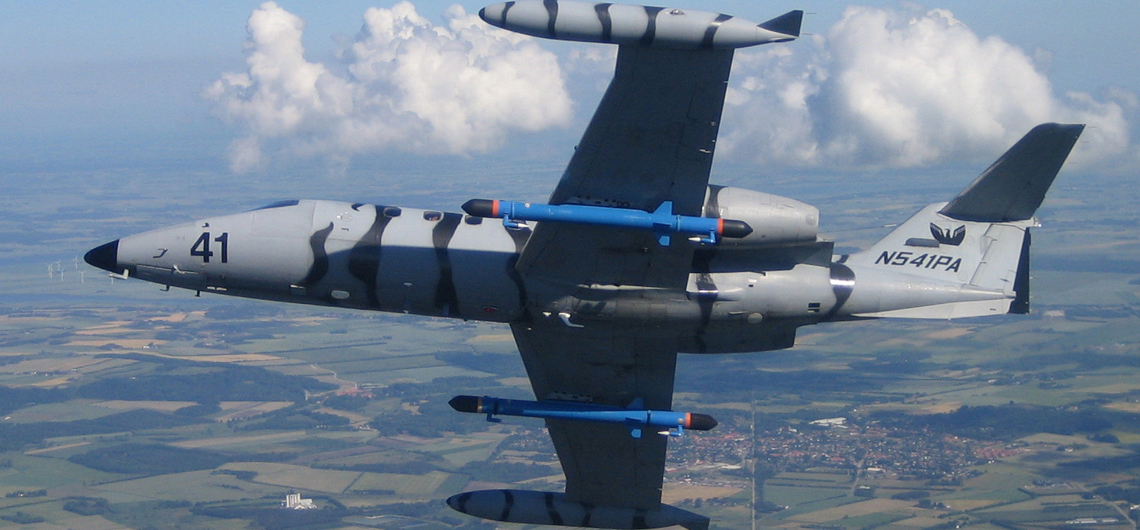
The entire activity lasted about 45 minutes, with the action really occurring over less than 30 minutes. Things move very fast and one could imagine that these contractor aircraft likely ‘died’ as a result of the aggression towards the bristling Carrier Strike Group and its air wing.
Once again, this is just one scenario that the red forces presented to the CSG, and we only get to see a fraction of what is really going on. Still, it is fascinating to see the contractors throw a dozen jets made up of three types, all with greatly different performance capabilities, at the CSG during a complex training evolution.

You can see how, when combined with certain rules of engagement, other higher-performance U.S. military aircraft, dense electronic warfare, as well as other unique variables, these types of training missions can sharpen the CSG’s skills so that they can be prepared to quickly react to the unknown while sailing overseas in less than friendly neighborhoods. It is also a reminder of why the Southern California Range Complex is so important to the Navy. It offers enough area to really get this type of training done, electronic warfare included, without setting far out to sea where adversary aircraft would have trouble even reaching them.
As such, the training area off the coast of Baja remains an ideally quiet place to put the latest and greatest naval air defense technologies, tactics, and procedures to the test.
Contact the author: Tyler@thedrive.com
